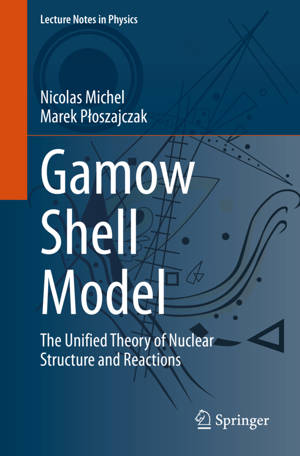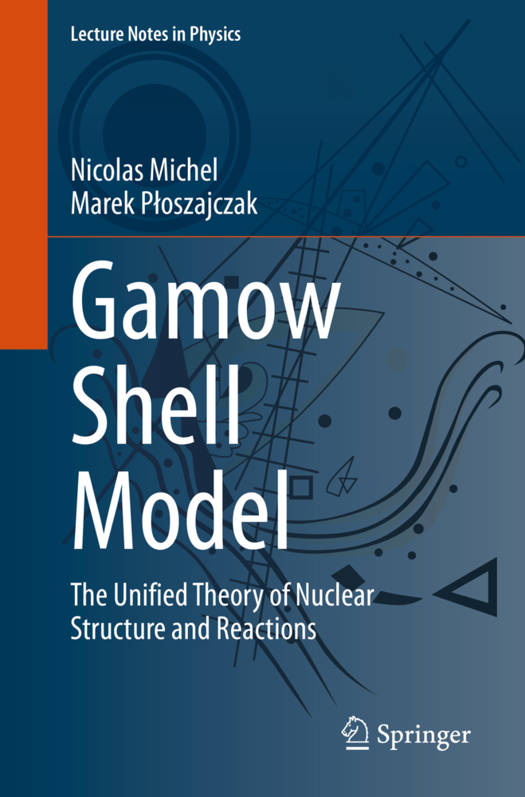
- Retrait gratuit dans votre magasin Club
- 7.000.000 titres dans notre catalogue
- Payer en toute sécurité
- Toujours un magasin près de chez vous
- Retrait gratuit dans votre magasin Club
- 7.000.000 titres dans notre catalogue
- Payer en toute sécurité
- Toujours un magasin près de chez vous
Gamow Shell Model
The Unified Theory of Nuclear Structure and Reactions
Nicolas Michel, Marek PloszajczakDescription
This book provides the first graduate-level, self-contained introduction to recent developments that lead to the formulation of the configuration-interaction approach for open quantum systems, the Gamow shell model, which provides a unitary description of quantum many-body system in different regimes of binding, and enables the unification in the description of nuclear structure and reactions. The Gamow shell model extends and generalizes the phenomenologically successful nuclear shell model to the domain of weakly-bound near-threshold states and resonances, offering a systematic tool to understand and categorize data on nuclear spectra, moments, collective excitations, particle and electromagnetic decays, clustering, elastic and inelastic scattering cross sections, and radiative capture cross sections of interest to astrophysics.
The approach is of interest beyond nuclear physics and based on general properties of quasi-stationary solutions of the Schrödinger equation - so-called Gamow states. For the benefit of graduate students and newcomers to the field, the quantum-mechanical fundamentals are introduced in some detail. The text also provides a historical overview of how the field has evolved from the early days of the nuclear shell model to recent experimental developments, in both nuclear physics and related fields, supporting the unified description. The text contains many worked examples and several numerical codes are introduced to allow the reader to test different aspects of the continuum shell model discussed in the book.
Spécifications
Parties prenantes
- Auteur(s) :
- Editeur:
Contenu
- Nombre de pages :
- 503
- Langue:
- Anglais
- Collection :
- Tome:
- n° 983
Caractéristiques
- EAN:
- 9783030693558
- Date de parution :
- 25-04-21
- Format:
- Livre broché
- Format numérique:
- Trade paperback (VS)
- Dimensions :
- 156 mm x 234 mm
- Poids :
- 721 g







